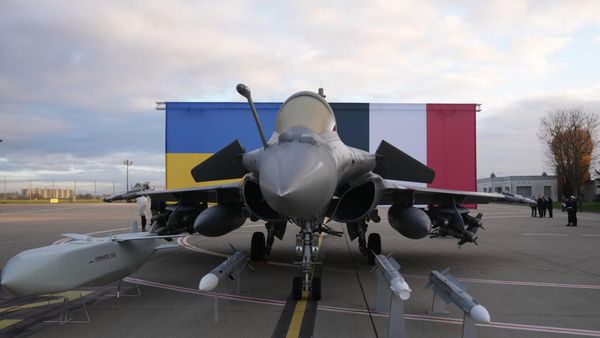
For Japan Month at Motor1, we’ve traveled far and wide to uncover the origins of Japanese car culture. For this piece, I’ll be experiencing the history of Japan’s street racing scene by walking a mile down the street to the arcade.
This is the story of two of the most influential works of fiction in automotive history—Wangan Midnight and Initial D—and how they brought real-life underground racing into the mainstream, both in Japan and the U.S.
The Origins Of Mid Night
We’ll start with Wangan Midnight, which can trace its origins back to Japan’s Bubble Economy of the early 1980s. Japanese car manufacturers were, at last, building fast and luxurious vehicles that could best some of Europe’s finest. With a burgeoning domestic sports car scene came a growing crowd of tuners, devoted to extracting the most performance possible out of these machines. The Yatabe test track, a 3.4-mile long, 45-degree banked oval in Tsukuba—think Gran Turismo’s High-Speed Ring—was the main venue where bragging rights were won. Peak performance in this era was measured in top speeds; by 1982, cars approached or exceeded 300kmh (186 mph).

The racing did not stay confined to the track for long. Sometime during the 80s, drivers turned to the highway systems of Tokyo for clandestine high-speed street racing. Due to the secretive nature of the extremely illegal and dangerous races, exact details and timelines are virtually impossible to come by, but it was clear that the most often-used road was the toll highway known as Bayshore Route B. Also referred to as the Wangan-sen, it boasted numerous miles-long sections of straight, relatively smooth highway.
The most infamous group performing top-speed runs on the Wangan was known as the Midnight Club. Details are, again, sketchy, but information about the famous cars can be gleaned from in-era publications (top speed runs were still underway at Yatabe at the time). As the 80s bled into the 90s and tuning technology rapidly progressed, Mid Night Club cars approached 200 mph while racing on public roads under the cover of night. Two of the most famous regulars of the Wangan were a Porsche 911 (930) Turbo, tuned by Porsche itself, meant to surpass the RUF CTR Yellow Bird, and a bright red 600+ HP Nissan 280ZX that was capable of well over 200 mph.
In 1990, at the height of the Mid Night Club’s heyday, a new comic series was published in one of Japan’s many seinen (young men’s) manga magazines. It was called Wangan Midnight. The main rivals’ cars were a Porsche 911 known as the Black Bird and a “cursed” Nissan Fairlady Z referred to as the Devil Z. This pair were directly based on the real-life Mid Night Club cars. Real-world Wangan racing faded out of popularity as the 90s wore on, as the risks of high-speed runs—and increased police surveillance—became too steep, but Wangan Midnight enjoyed sustained popularity. It continued its publishing run until 2008, and was subsequently turned into an anime.
In 2001, Japanese game company Namco published a game based on the manga. This arcade-only game would be familiar to anyone who ever played Daytona USA in the '90s; it featured two side-by-side seats with racing wheels and a pair of screens. The difference was that instead of driving through fantasy-themed NASCAR tracks, racers would pilot Japanese tuner cars down a replica of the Wangan at top speeds.
Racing Down The Wangan



The version that I’m playing today is Wangan Midnight Maximum Tune 5 (DX Plus), a recent installment of the series. This iteration debuted in 2021 in North America. It has more advanced graphics, vastly more cars, a wider track list, and better multiplayer than the initial 2001 release, but the concept has remained the same: Keep your foot down, conquer the Wangan, and watch out for semi trucks.
Most of the tracks feature at least one vast wide open straight, although in keeping with the real-life counterpart, the roads are rarely a smooth, easy ride—there are big pavement joiners that force feedback through the wheel, traffic can get shockingly heavy, and the road undulates without warning, causing your car to occasionally catch air.
Wangan racing is a game of millimeter precision at 300km/h, and the setup reflects it. The steering wheel is tight, requiring only subtle inputs. Getting through off-ramps quickly takes a little getting used to: for sharp corners, you let off the gas, flick the car in toward the apex, get back on the gas and then make small adjustments to keep the car half-sideways, powersliding through the corner. Maximum Tune 5 includes a full gated six-speed shifter for manual-transmission players. With a good matchup, the racing is incredibly intense and realistic.
Half of the fun in Wangan Midnight doesn’t come from the racing at all, however. It comes from customizing your car. You can purchase a game card that stores your vehicle—and your progress through the story—and from there begin building your own Devil Z (or Supra, or M3, or 911, or R8, or C6 Corvette—the available car list is long). Racing with slower base cars can be a little dull, but upgrading your car and continually mastering higher and higher speeds is where this game shines. It feels true to the source material, where the constant battle for higher speeds was the primary motivation.
The game cards work on any Maximum Tune 5 machine, so you can theoretically play at any arcade that has a cabinet. In Japan, with its higher density of arcades, this is extremely alluring; here in Seattle, there’s only one set of these machines within 500 miles of me. As I am pushing 30 and don’t come to the mall often anymore, my ability to build a Wangan-dominating MK3 Supra is limited, but the racing itself is still extremely fun.
As the Mid Night Club’s heyday faded through the 90s, another kind of racing was ascendant in Japan. Instead of high-dollar top-speed runs, it was vastly more grassroots and a little less shrouded in mystique—but in time, it became even more legendary.
The Birth Of Drifting
In the same era that the Mid Night Club was approaching 300km/h on the urban expressways surrounding Tokyo, out in the mountains, kids were learning how to powerslide up and down the winding passes (known in Japanese as touge). Less focused on racing and more focused on style, the cars were vastly less glamorous—cheap Nissan Silvias and Toyota Corollas ruled the day—and the organization was much looser. Professional drivers did emerge from the touge scene, however, and none was more famous than Keichii Tsuchiya.
Tsuchiya-san rose to prominence for his flashy driving style, powersliding through corners in competition racing to entertain fans. In 1987, the video series Best Motoring debuted, with Tsuchiya-san as host. In its spinoff Hot Version, which focused heavily on touge-style racing with modified cars, Tsuchiya’s personal AE86 Corolla was frequently featured, and his Toyota became iconic in its own right.
In 1995, in the manga serial Weekly Young Magazine, a new comic debuted known as Initial D. This story focused on the mountain racing scene in rural Japan, with a virtually unbeatable main character that drove a very special tofu delivery vehicle: a two-tone hatchback AE86 Corolla not unlike the one airing on Hot Version. That was no coincidence: Tsuchiya-san himself was a technical consultant on this new series. Initial D focused heavily on the dramatic and human aspects of racing, with intense rivalries and personal challenges accompanied by gorgeously illustrated drift battles.
Initial D remained in publication until 2013; in 2001, it was adapted into an anime. It was wildly popular, getting six seasons, two animated short films, and a highly acclaimed live-action movie adaptation. Like Wangan Midnight, it received a deluge of video-game versions; the one I found in a Seattle arcade was Initial D Arcade Stage 4, which debuted in 2007.
Do It Like Tsuchiya
Initial D is a bit more welcoming than Wangan Midnight. The cabinets don’t have a six-speed—simply an up-down lever for a “manual” transmission—and at first, races against the computer are relatively easy to win even with shoddy driving. Every race comes complete with a cutscene of the manga’s characters discussing the battle as you line up with a rival from the game. Traffic is non-existent, and momentum is mostly conserved even when hitting guardrails. This is good, as you’ll be doing it a lot.
By default, turning in Initial D causes the car to drift. It doesn’t matter what vehicle you choose—I drove an Evo VI and an Integra Type R, just to be sure—it’s going to end up sideways. This means that if you’re used to basically any other racing game on Earth, it’s tricky to plan out your lines, and you’ll end up putting the rear in the wall often. Against easier opponents on wider tracks, this is no big deal, because you can bounce a bumper off a guardrail and not worry about it.



Start cranking up the difficulty, and you’ll find the skill ceiling wildly high. To get a good drift and keep the car’s revs high, you’ll want to feather the gas and stomp the brakes at the exact right time during turn-in—almost like a street racing rendition of Mario Kart. In uphill courses with tight corners, timing this well is crucial. Braking alone to slow down for the corner destroys all of your momentum, so perfecting the pedal dance is required.
All of this is made more difficult due to the fact the steering is largely dead on-center, but only has a little over 180 degrees of total rotation. As a result, mid-corner line adjustments are virtually impossible steering alone, which means that your brake and throttle feathering are your best hope. Where Wangan Midnight emphasizes subtle inputs and well-planned racing lines, Initial D feels more like a rhythm game, with rapid motions and lots of movement.

The Verdict
Wangan Midnight is definitely more my speed, as someone who grew up playing Gran Turismo. The physics are more realistic, the car list is longer, and there’s more of a handling difference between vehicles. Initial D feels more like a party game that you’d use to introduce your non-car friends to racing.
The popularity of both series reflects this, however—Wangan Midnight, while not unheard of, remains niche in the US. Go to a Japanese car show anywhere in the States, however, and you’re likely to run into a host of Initial D references—from the iconic Eurobeat soundtrack to the art style or even replicas of the cars themselves. Part of its sustained success has been its accessibility and strong characters, both of which the game adaptation reflects.
Whichever cabinet you find yourself sitting down at, all I can recommend is to bring a lot of quarters. You’re probably going to get hooked, fast.







